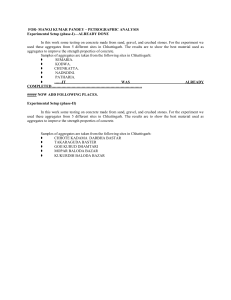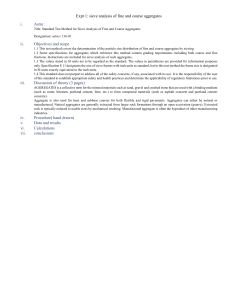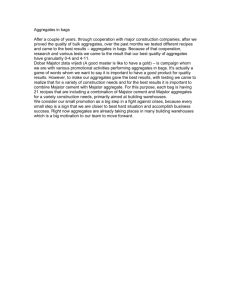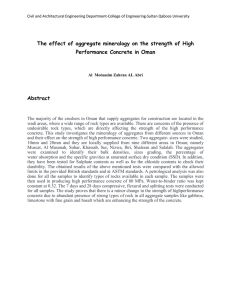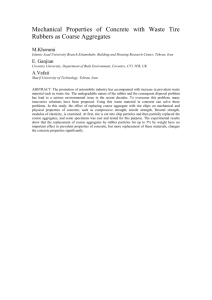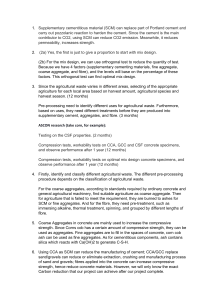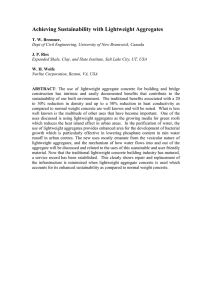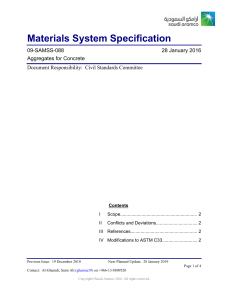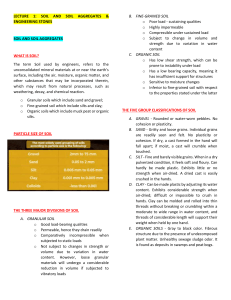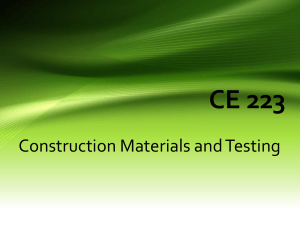Portland Cement Concrete Using High Levels of Microfines P.N. Quiroga D.W. Fowler
advertisement
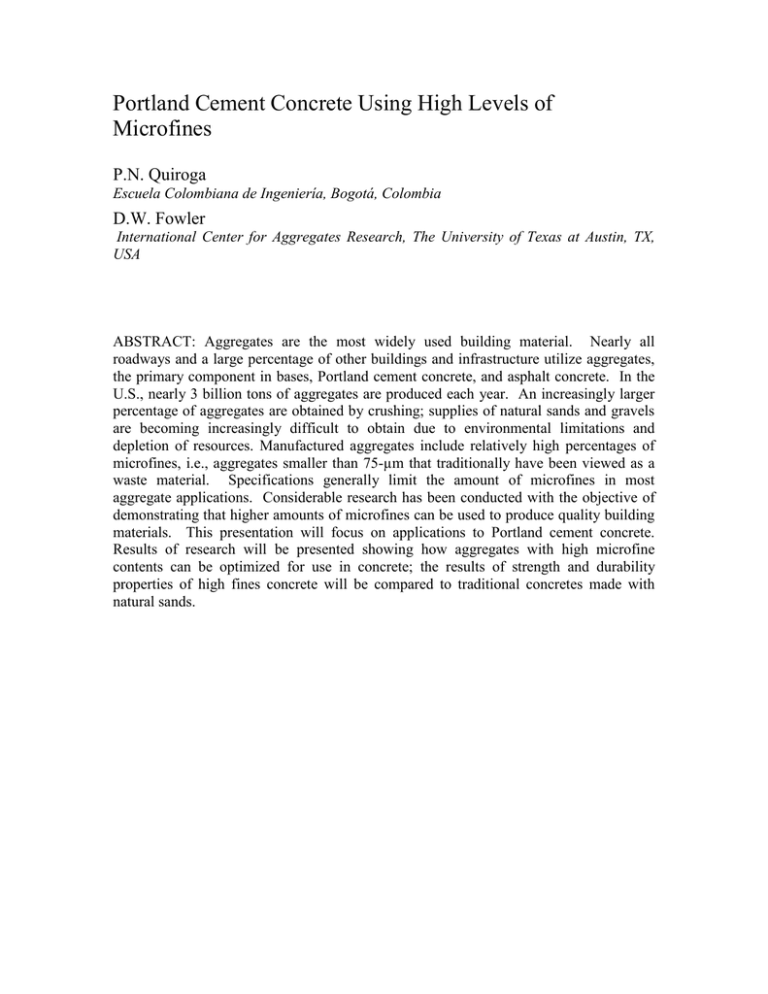
Portland Cement Concrete Using High Levels of Microfines P.N. Quiroga Escuela Colombiana de Ingeniería, Bogotá, Colombia D.W. Fowler International Center for Aggregates Research, The University of Texas at Austin, TX, USA ABSTRACT: Aggregates are the most widely used building material. Nearly all roadways and a large percentage of other buildings and infrastructure utilize aggregates, the primary component in bases, Portland cement concrete, and asphalt concrete. In the U.S., nearly 3 billion tons of aggregates are produced each year. An increasingly larger percentage of aggregates are obtained by crushing; supplies of natural sands and gravels are becoming increasingly difficult to obtain due to environmental limitations and depletion of resources. Manufactured aggregates include relatively high percentages of microfines, i.e., aggregates smaller than 75-µm that traditionally have been viewed as a waste material. Specifications generally limit the amount of microfines in most aggregate applications. Considerable research has been conducted with the objective of demonstrating that higher amounts of microfines can be used to produce quality building materials. This presentation will focus on applications to Portland cement concrete. Results of research will be presented showing how aggregates with high microfine contents can be optimized for use in concrete; the results of strength and durability properties of high fines concrete will be compared to traditional concretes made with natural sands.
